I arrived at the top of the boat ramp at Riffe Lake around 6 p.m., on a cool evening in the second week of March. I had some daylight left, enough to get the boat in the water and row the mile and a quarter to the north side of the reservoir where I would drop anchor for the night. I piled gear, groceries, and water jugs into the cockpit without keeping track of what I put aboard or where it went. I only knew that there was nothing left in the car and whatever I’d brought was aboard. I’d sort it out later.Riffe Lake is a reservoir a dozen miles long from Mossyrock Dam to the mouth of the Cowlitz River; 14 miles if measured on a map down its center, along the long sagging curve of its east end and across a jog at the west end that looks like a displaced fracture. The reservoir was down about 25′, and between the water and the forested hills surrounding it, there was a broad band of buckskin-brown dirt as far as I could see. Backing the trailer down the 150-yard-long ramp across that barren landscape was like descending into a flooded open-pit mine. Of the five hinged sections of floating dock at the bottom of the ramp, only the last one was afloat. I eased HESPERIA, my 16′ cruising garvey, off the trailer into the water and pulled the bow up on the beach.After I parked the rig, I shoved off and moved bags out of the way so I could sit down to row. I could feel the weight of the gear as HESPERIA slowly gained momentum. The water, food, firewood, gas, motor, spars, and sails all had to be set in motion, but after a dozen strokes they helped carry HESPERIA forward. The air was still, the lake quiet, and the cockpit resonated with the sound of water purling around the hull.
Join The Conversation
We welcome your comments about this article. To include a photo with your remarks, click Choose File below the Comment box.

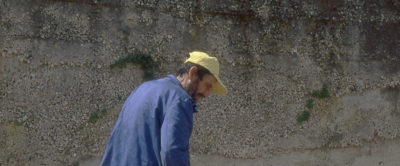


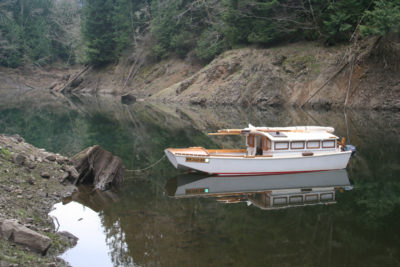
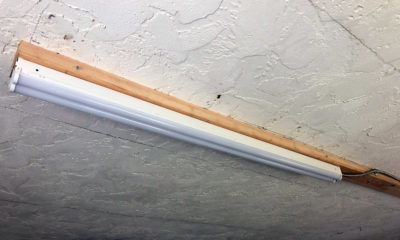
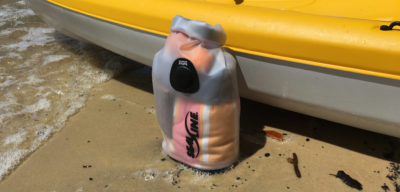

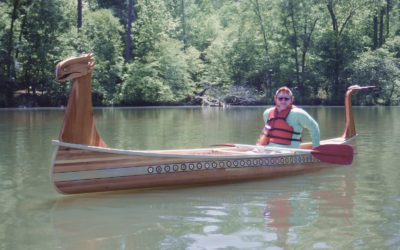
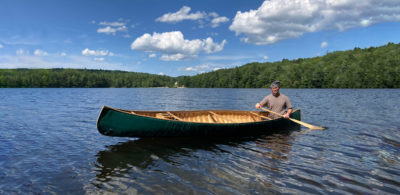
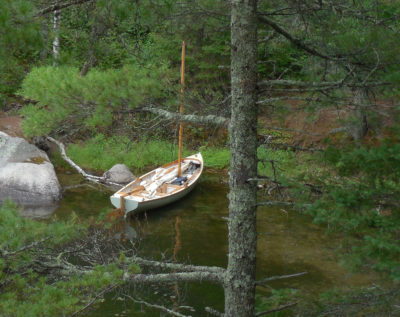
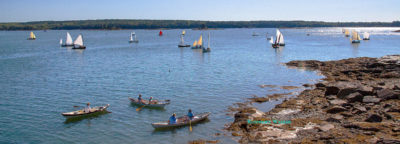
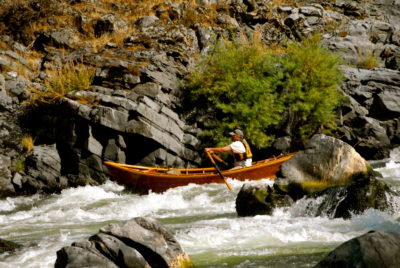
Absolutely wonderful adventure. Well done. Do you have a link to where one could get plans to start building one of our own? Wife took one look at the article and said , “I want one!” Thanks.
Thanks for the kind words. Unfortunately I didn’t draw up any plans for HESPERIA. The design was conceived as a cross between a Caledonia yawl and an Escargot canal boat. I made a number of sketches to come up with the cabin and sailing rig, then started with the Aphasia hull by Phil Thiel, enlarged by 10 percent (if I recall correctly). With the hull complete, I mocked up the benches, decks, and cabin with sticks and cardboard, making sketches to do the math for finished dimensions as needed. I was just hoping my ideas worked out—they did, fortunately—and wasn’t thinking about a market for the plans.
I totally second that thought! What a beautiful ship. I want one too! Great Job!
Great story. I have read an earlier adventure of HESPERIA; very interesting camp cruiser.
DJ
Beautiful little boat, Chris!
What are her dimensions?
Thanks, Ken. HESPERIA is 17′ long and has a beam of 6′ and a depth amidships of 25-3/4″.You can find the story of her origins and videos of her in action in a previous story I wrote for the June 2015 issue, “A San Juan Islands Solo.”
Wonderful article, Chris, very evocative. Can you provide some more information on that neat little wood stove?
Thanks, Pete. The wood stove is the second of three that I’ve made. The first was for the Escargot that my son built. The design called for a storage locker in the 24”-wide space between the main cabin aft and the sleeping quarters in the bow. I looked for quite a while to find a stove that would fit, and while there were some small stoves designed for “hot-tenting,” they were rather expensive. I had inherited an oxy-acetylene torch kit from a good friend, but I hadn’t done much welding, so my first effort was a bit ragged. The steel is about 1/16” thick (I don’t know the gauge) and came from a piece about 4’ x 5’ that was used by an office mate for the mat for a rolling chair at her desk.
I use a jig saw with a metal-cutting blade to cut the pieces I need, then bend them with a sheet-metal brake I made. I tack-weld the seams with the torch before applying a weld on the full length of the seams. That first stove was rectangular and pretty straightforward. It didn’t have enough draft because I’d made the air intake with a bunch of ¼” holes. After I modified that to increase air flow, it was fine.
HESPERIA’s stove was made to fit in a corner and face diagonally into the cabin. I just drew the shape I wanted and went from there. All of the stoves have windows of mica that I ordered online. They make a world of difference. I can see the state of the fire inside without opening the stove and the windows illuminate the cabin. Even through the windows are small, they invite the same relaxing gaze that campfires do.
Because the stoves are in tight spaces, I protect the surfaces around them with metal shields. Home Depot has some stamped steel grills that look good and block a lot of the heat. The Escargot has a guard of corrugated steel.
HESPERIA’s stove is the only one with a heat exchanger. It’s a maze of ½” copper pipe with a couple of 1” reservoirs to increase the volume of heated water. The plumbing for the exchanger crosses the cabin to the sink in the opposite corner to provide hot running water.
The stoves have 2” pipe for air intakes. A bar across the middle of the opening in the inside end of the pipe is threaded for a ¼” x 20 screw that has a circular plate to regulate the flow of air into the stove. There’s no need for a damper at the stovepipe.
I painted the stoves with flat black paint formulated for barbecues and light a fire to outgas the paint before installing the stove in the boat.
I’ve been quite spoiled by the cozy heat the stoves provide.
A cruise well done in the spirit of L. Francis H.
– bk
What a great way to start my day. Sipping coffee and reading your story about a great trip on a wonderful boat.
I have seen a number of small boats with aft cabins like yours. I love the look but what is the practical advantage/disadvantage of this type of arrangement? Is it to keep the cabin in the high volume portion of the hull?
Having the cabin aft does indeed keep the take advantage of the greater hull volume aft. The width at the transom offers more space for the head of the sleeping platform in the cabin. The greatest width is amidships, of course, but the wood stove and the sink are there. I still a good amount of space between them and my feet can fit under both when I’m in bed. A few other benefits: for motoring, the cabin isolates the cabin from the noise of the outboard; I can see over the cabin top when it is lowered, but the view forward is better without the cabin in the way; access to the main mast is much easier.
Nice trip and a GREAT write-up.
Partially-drained hydro reservoirs are not usually top of mind as cruising destinations, but your excellent little cruise proves that there is interest and adventure to be found where you least expect it.
Thanks!
Very nice article. Great looking boat.
I’ve never fished Riffe Lake but apparently you have the possibility of adding some landlocked coho salmon to your nettle soup if you can catch one. Then your Huck Finn adventure would be complete.
Thanks, Chris!
Great story, I had to read your earlier 2015 article too! You sure built a luxurious little boat for cruising! Well done, and best wishes for more voyages.
Thank you for a wonderful article. I enjoyed the cruise, but as an amateur boat builder I was left with a strong desire to learn more about HESPERIA.